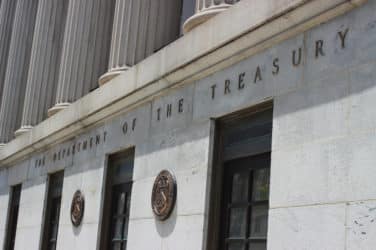The U.S. Treasury market passed another milestone for a potential market structure redesign as the 21-day comment period for the Financial Industry Regulatory Authority’s plans to make US Treasuries TRACE-eligible securities just opened.
According to its filing with the U.S. Securities and Exchange Commission, FINRA proposes that each party involved in trades involving US Treasury bills, notes, and bonds would need to report the transaction to FINRA’s TRACE reporting engine by the end of the day on the trade date (T+0). If the trade occurs after 5 pm ET, both parties would have to report the trade no later than the following day (T+1). Transactions involving US Savings Bonds are the only Treasury instrument that market participants would not need to report.
If the regulator wanted to establish a consolidated tape for US Treasuries, this would be a solid first step, according to Brad Bailey, research director, securities and investment group at industry analysis firm Celent. “We’re not too far from that,” he said.
However, FINRA’s filing states that the SRO only seeks to collect, and not distributed, key pieces of trade data.
This data would include the instrument’s CUSIP or another numeric identifier or FINRA symbol; the price and size of the transaction; its date of execution; counterparty identifiers; whether the party is acting as a principal or agent; and the trade’s commission and settlement date as well as the reporting-side broker or the contra-party introducing broker in case of a ‘give-up’.
If the SEC approves FINRA’s proposed rule change, the self-regulatory organization would announce the implementation date via a regulatory notice that it would publish no later than 90 days after SEC’s approval. The new rules would then go into effect not later than 365 days following SEC approval.
FINRA initially does not plan to charge trade-reporting fees for Treasury trades, but will investigate long-term funding models based on the size and volume of Treasury trades reported to TRACE.
From a technology perspective, instituting such a reporting requirement should not be that difficult, estimated Bailey.
“If you can do this in corporate bonds and agencies then you can certainly do this in Treasuries,” he said. “It would add a certain layer of workflow to people who phone and enter data into an order-management system. It’s not something that has not been done before in what I would view as more difficult products.”
For more on Bond Trading:
- MarketAxess Brings Dark-Pool Features to Corporate Bond Trading
- Taking the Pulse of Innovation in Credit Markets for 2016 (by Simon Linwood, MTS)
- Market Hails Opening of Chinese Onshore Bond Market






